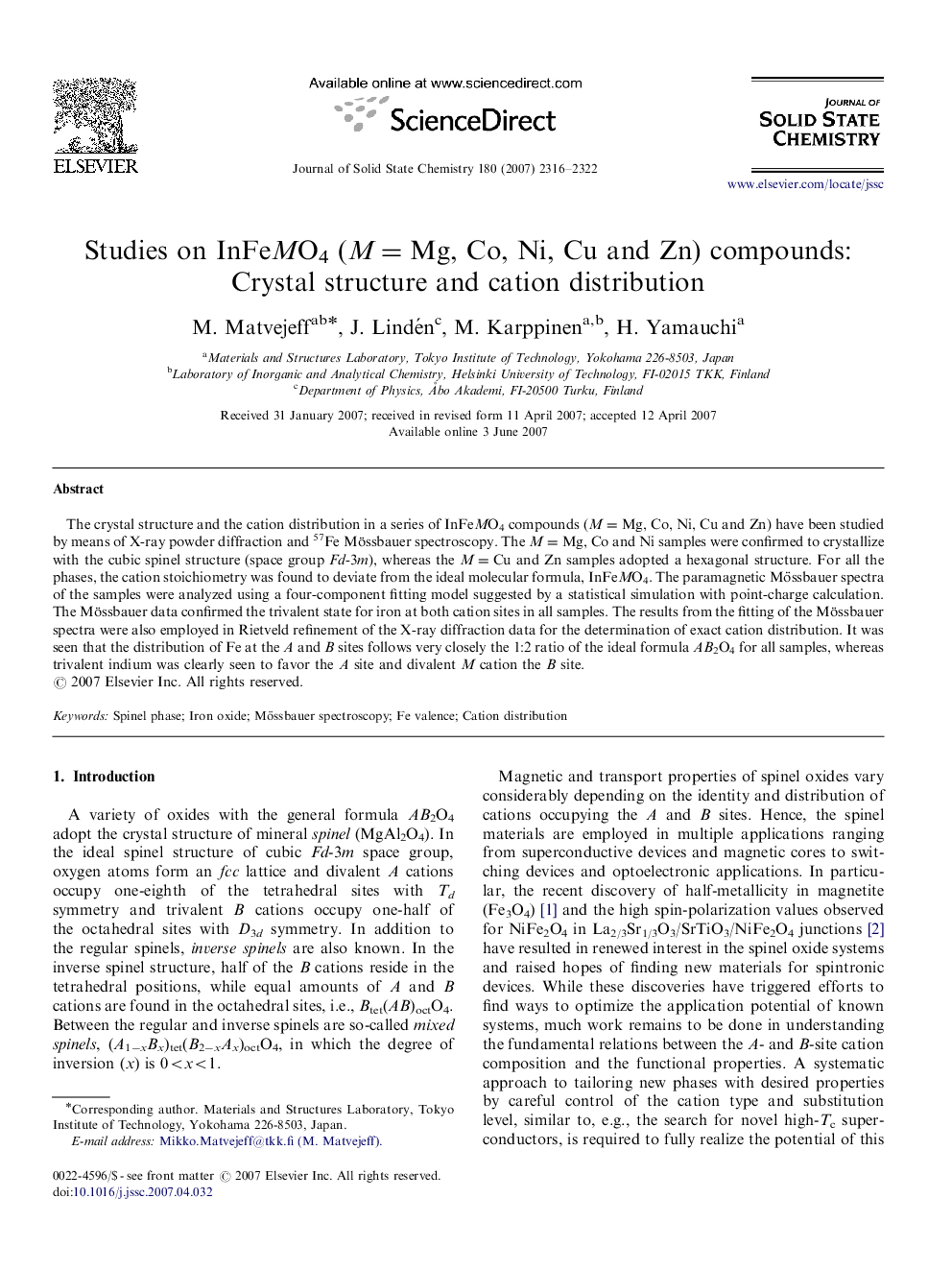| Article ID | Journal | Published Year | Pages | File Type |
|---|---|---|---|---|
| 1329834 | Journal of Solid State Chemistry | 2007 | 7 Pages |
The crystal structure and the cation distribution in a series of InFeMO4 compounds (M=Mg, Co, Ni, Cu and Zn) have been studied by means of X-ray powder diffraction and 57Fe Mössbauer spectroscopy. The M=Mg, Co and Ni samples were confirmed to crystallize with the cubic spinel structure (space group Fd-3m), whereas the M=Cu and Zn samples adopted a hexagonal structure. For all the phases, the cation stoichiometry was found to deviate from the ideal molecular formula, InFeMO4. The paramagnetic Mössbauer spectra of the samples were analyzed using a four-component fitting model suggested by a statistical simulation with point-charge calculation. The Mössbauer data confirmed the trivalent state for iron at both cation sites in all samples. The results from the fitting of the Mössbauer spectra were also employed in Rietveld refinement of the X-ray diffraction data for the determination of exact cation distribution. It was seen that the distribution of Fe at the A and B sites follows very closely the 1:2 ratio of the ideal formula AB2O4 for all samples, whereas trivalent indium was clearly seen to favor the A site and divalent M cation the B site.
Graphical abstractThe crystal structure and the cation distribution in a series of InFeMO4 compounds (M=Mg, Co, Ni, Cu and Zn) have been studied by means of X-ray powder diffraction and 57Fe Mössbauer spectroscopy.Figure optionsDownload full-size imageDownload as PowerPoint slide
